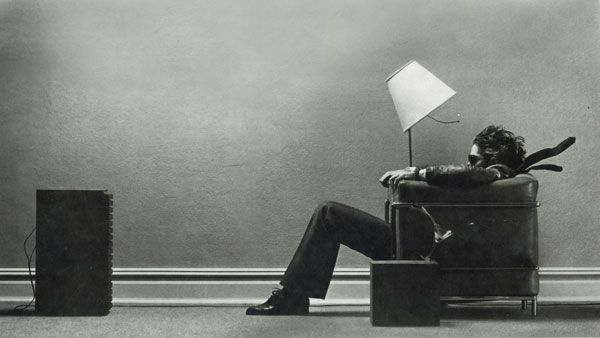I love that movie. It always disappoints me that Simone was just a puppet and had no thoughts or feelings of her own. Still such a great movie and yes I love it.
The movie S1M0NE, starring Al Pacino, was brought up in another thread. Rather than hijack that other thread, I wanted to address a few ideas here.
Yes, "Simone" (Simulation One) was merely a puppet, not an AI. One might argue that all actors are puppets to the director, except that we understand a movie (like many other endeavors) is a collaborative effort. The actors are individual artists in their own right and contribute to the grand picture orchestrated by the director. In the end, the characters portrayed are composites of the writer's colorful script, the actor's skill, the stunt double's daring, the composer's moving score, the spectacle of visual effects, and the editor's nuanced timing. Even the actor-celebrities themselves may be composites off-screen—carefully spun properties in the public eye.
That distinction between fact and fancy was the whole point of S1M0NE. Much of the satire had to do with people's responses to the composite, simulated "personality" on screen. (Was Simone really that good, or was she superlative in an eyeglasses-on-the-floor, trendy way?)
The Turing Test was proposed as a test of how well a machine can simulate human responses in a text-only chat. Many mistake this as a test of intelligence or "mind," when it was actually meant to illustrate the opposite. (Likewise, Schrödinger's cat was meant as a satire on quantum mechanics, yet many picked it up as the perfect analogy for explaining QM concepts.)
The Turing mistake is made by people who confuse the conventions and symbols of a technology for the ideas they represent. For example, cameras of any kind "see" the world very differently from the way a human sees the world. There is a great deal of stylized lighting that must be done to make the image captured by a camera "look natural." Also, the human eye—or rather the brain—motion stabilizes our view of the world. And the "whip-pans" of eye movement are edited out in the same way a film editor cuts together just the relevant images of a scene. Our eyes see the movement of the environment during a head turn, but the "experience" of the blur is suppressed, edited down to irrelevancy. Thus, even the cuts, wide shots, closeups and other conventions of moviemaking are a learned language symbolizing head turns, environmental gestalt and focused attention, respectively.
Let me underscore that cameras and microphones are a tunnel-visioned view of the world. Our brains build up a gestalt of the world around us as delivered by the senses. We're aware of so much more than what is directly in front of our eyes at a given moment, but moviemaking is tunnel vision. Much of what we think we see in a movie is actually filled in by the brain, and VFX artists know how to take advantage of that. For example, a doll-sized scale figure looks fake on camera if it is too detailed because a real figure that small in perspective is far enough away to lose some detail.
Now re-consider that text-only chat—is the other party a person or a machine? One is tunnel-visioned by the text-only constraint. People in forums like this use emoticons and abbreviations, like LOL, to fill in all the nuances and gestures and tones of voice that are lost in this medium. The text-only Turing Test becomes an Uncanny Valley when the simulation is on-screen or an in-person animatronic.
S1M0NE also addresses another subject of interest for me. Many people claim to categorically "hate CGI," but I can guarantee that many computer generated, or digitally composited shots have slipped under their radar completely unnoticed. Artists can botch a piece whether the tools are olde fashioned analog techniques, or cutting edge digital. The skill of the artist is what matters. How good is the simulation?
Is it live, or is it Memorex?

Last edited:

